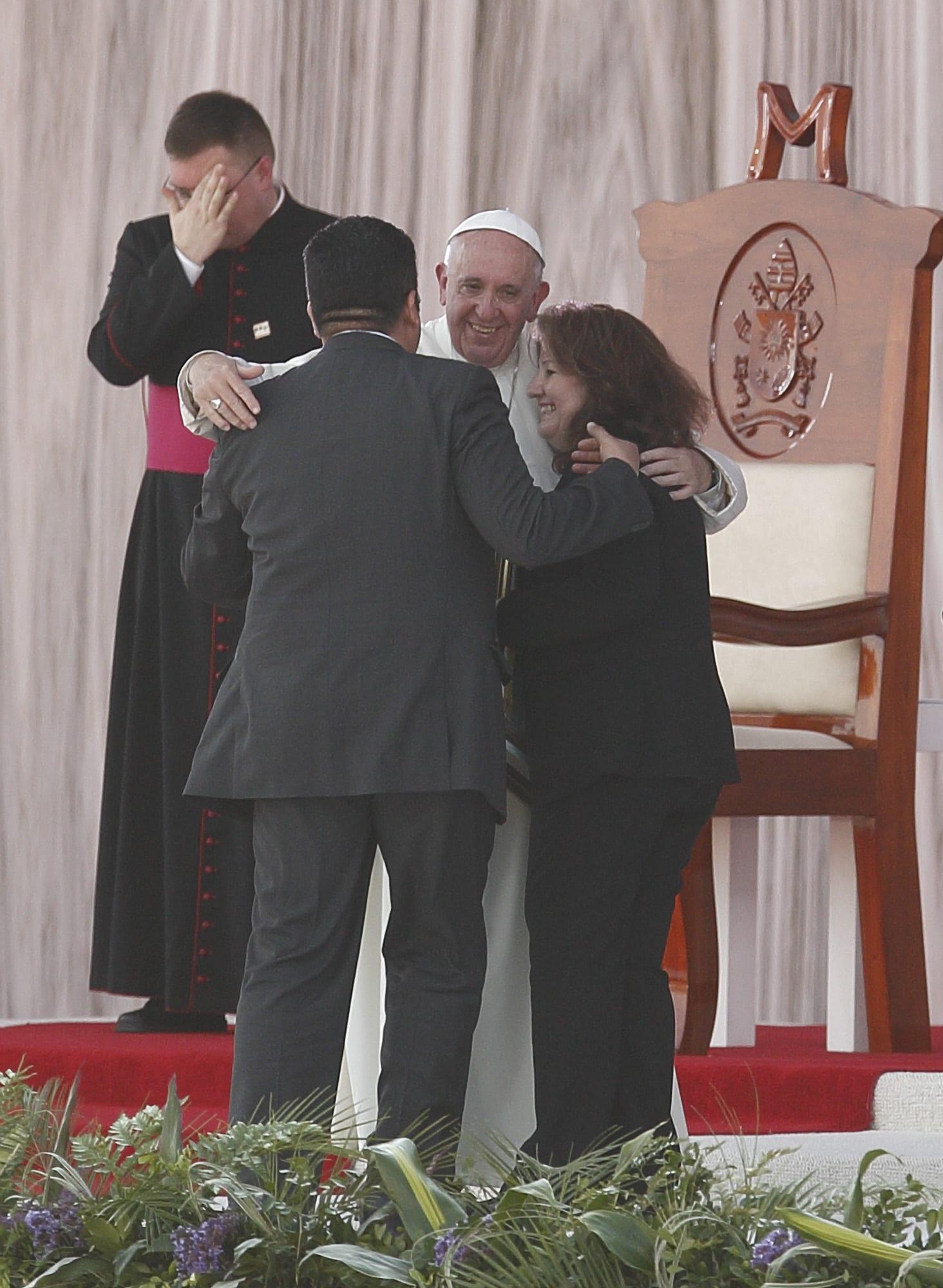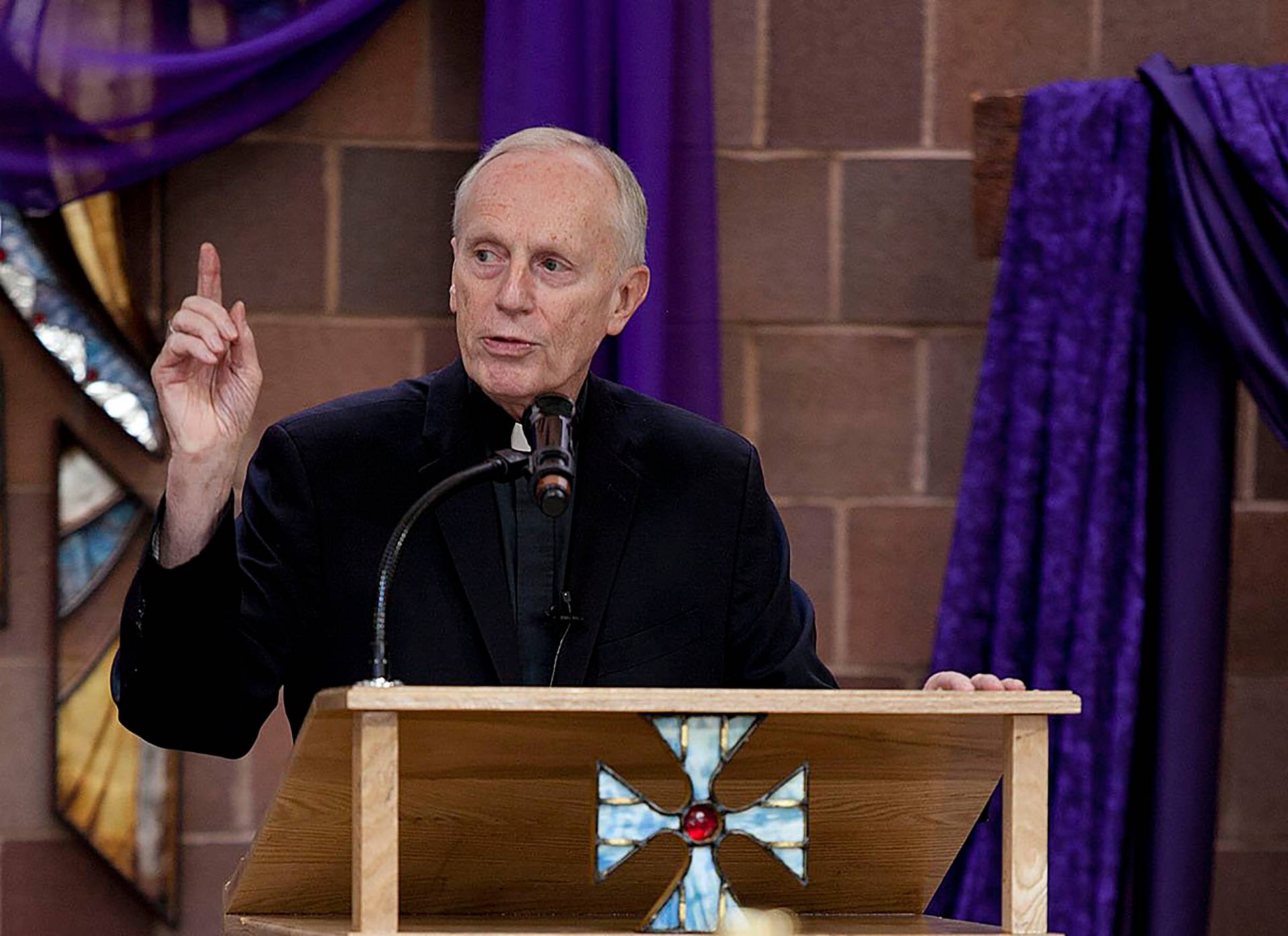Astonishingly, some Catholics continue to see the debate over Pope Francis’s document on the family, Amoris Laetita, entirely in abstract terms of whether or not the Church should conform itself to the world in the matter of divorce.
In some of the more lurid scenarios, protesters are cast as heroic martyrs to the truth, boldly taking the place of Thomas More or Athanasius, against a pontiff presumably playing Henry VIII or Arius.
This view is laughable, given that throughout the synod church doctrine on marriage was never in question, and Amoris Laetitia is a long hymn to the beauty and necessity of a covenant of life-long fidelity.
Yet one of the authors of the now-famous dubia letter challenging the pope, American Cardinal Raymond Burke, threatens that if he does not receive a reply from Francis “clarifying” the teaching of Amoris he will declare it to be “a serious error.” The “error,” as he put it in a recent interview, is “to give latitude to a practice which has never been admitted in the Church, namely the practice of permitting people who are living publicly in grave sin to receive the Sacraments.”
As Burke puts it: “If I’m bound to someone in a marriage and I’m living in a marital way with someone else, in adultery, pastoral care should be directed to helping me free myself from the sin of adultery. It’s no help to me whatsoever and a positive harm to me to tell me, ‘That’s all right, go ahead, and you can live that way and still receive the Sacraments.’”
All of this seems straightforward and compelling — so much so that huge numbers of quite intelligent Catholics have been persuaded by it — until you realize that not all divorced and remarried people can simply be regarded as adulterers, and that Amoris never issues any kind of sweeping invitation to them to receive the sacraments.
To take an obvious example, a woman abandoned by her abusive husband who remarries to provide for her children might be in the same legal category as the philandering playboy who ditches his wife for a younger model, but no one could claim that both are in the same moral category.
Imagine that the woman in the first case, over time, experienced a radical conversion in her life, and is today an active member of the church community. Let us suppose she cannot, for technical reasons, obtain an annulment (these are rare cases), and the first husband has long since remarried.
Apply Canon 915, and she is an adulterer obstinately persisting in sin who must be barred not just from the sacraments but from taking part in the life of the Church as a reader or catechist.
At no point does Amoris say — as Burke puts it — “that’s all right, go ahead, and you can live that way and still receive the Sacraments.” It says that many such cases require an individual discernment because they cannot simply be lumped together as ‘adultery.’
What Amoris says is that a pastor approved by his bishop should arrange for, in effect, a long retreat involving an examination of conscience, a facing-up to truth, a light-and-shadows discernment, applying the truths of Catholic doctrine on indissolubility and the Eucharist to this particular, unique, concrete situation.
As Chapter 8 of Amoris constantly reiterates, this is not about admitting exceptions to absolute moral norms, nor weakening in any way the commitment to the ideal of indissolubility, but recognizing that people can grow out of their situation towards God and the Gospel, and at the same time be better integrated into the life of the Church.
While safeguarding the moral teachings of the Church, pastors also need to look for opportunities for them to grow in faith.
At the heart of Chapter 8 is a very old-fashioned, and Thomist, idea of conscience as a dialogue between the moral norm and the person before God. Amoris quotes Aquinas to the effect that the more we descend into the details of situations, the more general principles will be found to be defective; the law is necessary, in other words, but not sufficient.
The accompaniment that Amoris envisages is, essentially, a formation of conscience in which a person grows in prayer and faith, and the truth about their lives comes to the fore, naked before God’s judgement.
The law remains the law; doctrine is intact. Marriage is for life; divorce is a terrible scourge, a great wrong. But together priest and divorcé take into account attenuating factors or particular circumstances, recognizing that even in an objective situation of sin it’s possible to grow in grace and charity, with the help of the Church.
In some cases this could include, as Amoris makes clear in the famous footnote 351, the assistance of the sacraments, which given that the law remains the law, could only ever happen if — to put it simply — the person involved is not, morally speaking, an adulterer, and there has been evidence of the grace of conversion.
The case of the abandoned woman came up frequently in the synod as an example of where the law identifying all divorced and remarried as adulterers was simply too crude to capture particular human realities, and where discernment was necessary. This was the approach agreed to by the synod, developed in Amoris, and explicitly rejected by the cardinal’s supporters.
Yet none of them have explained why this hypothetical woman should be treated as an adulterer. No one has convincingly shown how the simple application of the law is adequate and necessary in her case.
No one has even commented on that, or any other, concrete case. Instead, the law has been repeated and reaffirmed — that adulterers may not receive the Eucharist, and that Amoris is heretical to suggest otherwise.
In other words, we have here two radically divergent approaches: one which seeks to discern and integrate, attentive to the different circumstances, the other which seeks to apply the law uniformly and refuses even to discriminate between different cases, for fear it will lead to conforming to divorce.
One sees with the eyes of mercy, upholding the law and the ideal, yet attentive to individuals; the other is blinded by an obsessive concern for the defense of the law and is simply uninterested in individuals.
There is, after all, a chasm. A mature Amoris discussion should be about cases, yet for many, even that discussion apparently is beyond the pale.
As Enzo Bianchi, the prior of Bose monastery, observes in the Vatican newspaper L’Osservatore Romano, the source of the “grotesque accusations and insistent polemics” directed against Francis has been precisely the pope’s recovery of Jesus’ announcement of the merciful face of God.
It led to the condemnation of Jesus then, and to that of Francis now.
















